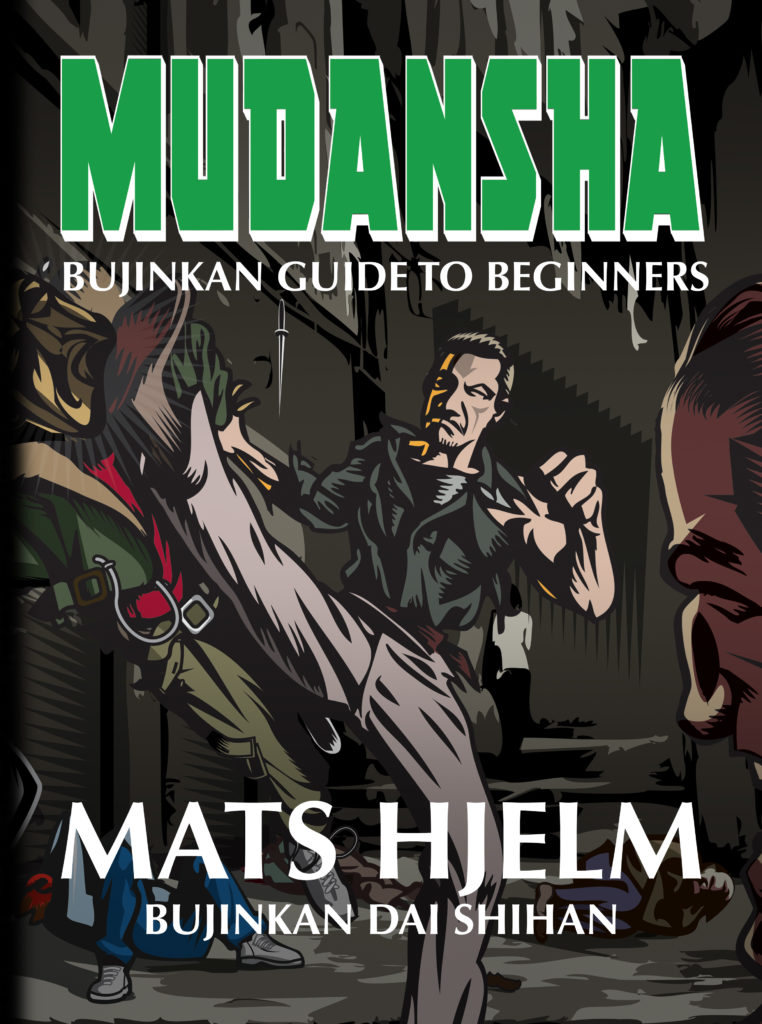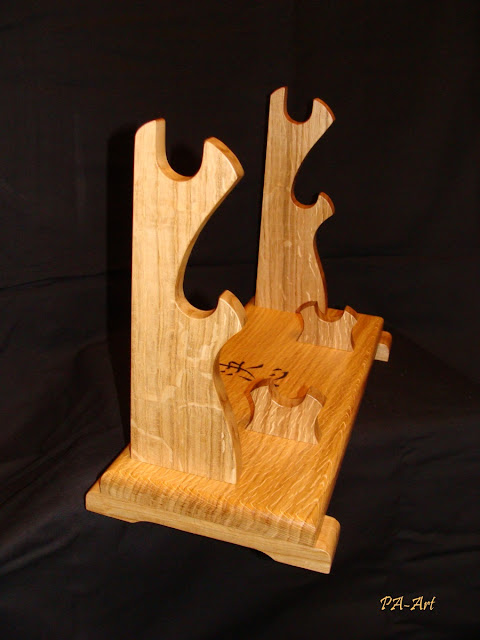Do you Know Uchi Gake?
From Shiro Kuma by kumablog
In the official Tenchijin, in the Chi Ryaku no Maki, in the Nage Kata you find a throw that very few people understand. It is Uchi Gake. (1)
It is listed as follow: “Uchi Mata / uchi gake (kuden) (内股内掛 口伝).”
The explanation of the Tenchijin is cryptic. It says “Additionally, after hane age, you can knock uke down by obstructing them with uchi gake (内掛け) or “inner hook.””
Ten years ago, I asked Noguchi sensei. I understood that it was similar, in a way, to the same movements in Jūdō. Except that “Gakeru” (2) means to hook or catch. (2)
In Jūdō “Gari,” means to harvest. (3)
Also, in Jūdō, they have split the Nage Kata into three sets of techniques for the arms, the hips, and the legs. This is not the case in the Bujinkan because the nage waza includes the three sets of techniques. This is a Tenchijin and will need another article.
So, why do we have “Uchi Mata / Uchi Gake” in the program? As you might have understood, Uchi Gake is the continuation of a failed Uchi Mata. After failing to throw Uke with Uchi Mata, your right leg goes down and “hook” Uke’s right leg, he falls on his back.
But this is not all. If instead of hooking the right leg, you reposition your body and hook the left leg you get another Uchi Gake. As it is the case in Jūdō, we can name the first one, Ko Uchi Gake; and call the second one, Ō Uchi Gake.
The pictures will help you to understand better.
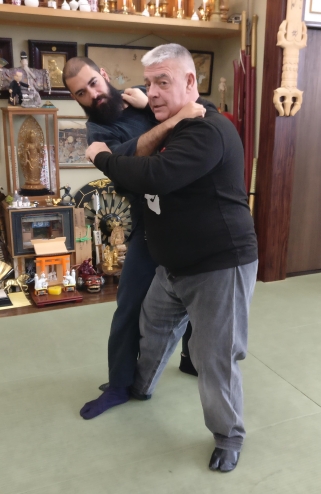
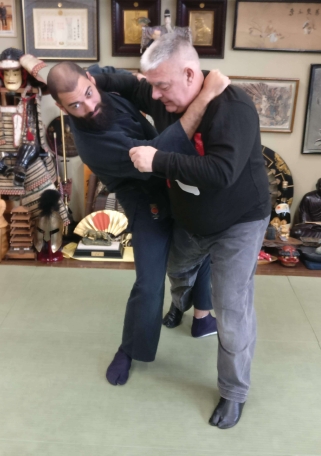
But if we have these two extra throws, we can apply the same logic to Ō Soto gake (outside), we get:
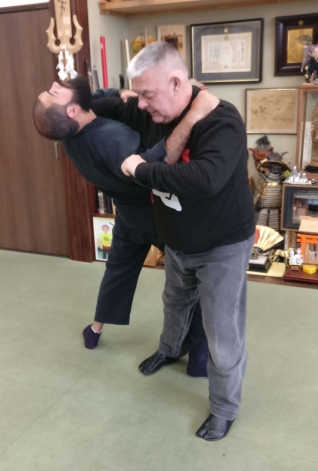


I hope that now you know Uchi Gake, and that you will experiment it during your next class.
Enjoy!
________________________________
1 内掛, uchi gake: inside leg trip
2 掛ける, gakeru: to catch (in a trap, etc.) / Note: there are 25 different definitions for Gake in my dictionary.
3 刈る, to cut (grass, hair, etc.); to mow; to clip; to trim; to prune; to shear; to reap; to harvest
Note to the reader: No Brasilian Spartan was injured during the session. Thank you Leandro Barros for your help.
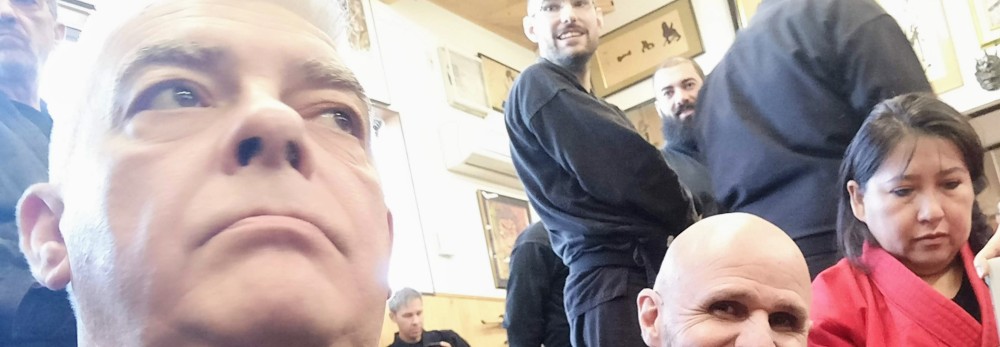

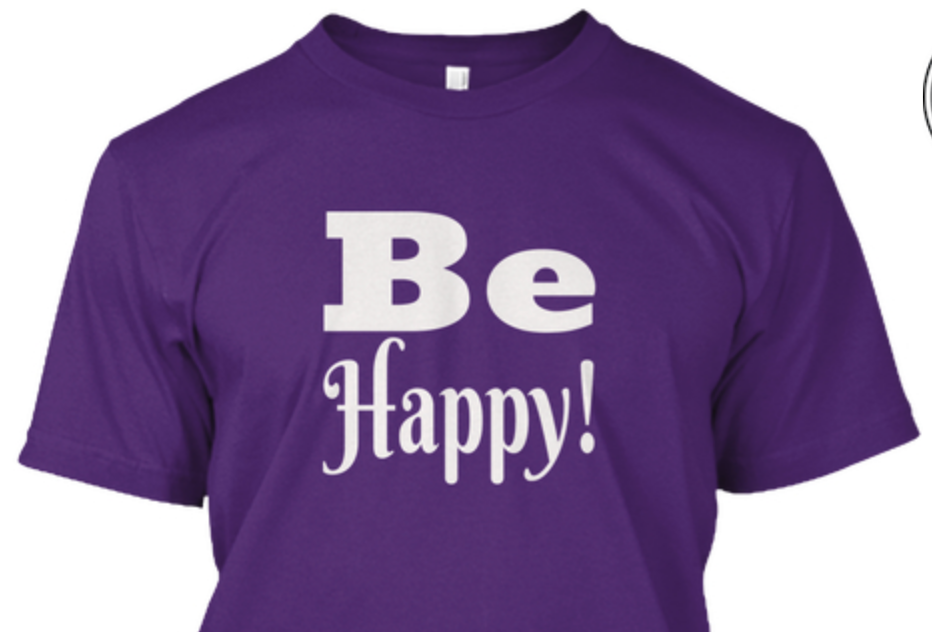

 武神館有段者の案内所
武神館有段者の案内所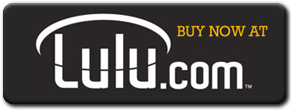
 20% DISCOUNT
20% DISCOUNT 
